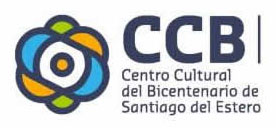MYTHS AND LEGENDS ROOM
THE SPEECH AND THE QUICHUA LANGUAGE
“A Santiaguenian person speaks, feels, sings an lives the Spanish. The language gets richer with the local slang and its terms, usually Quichua” (Elvio Arnoldo Ávila. 1991. “Cómohablaelsantiagueño y elargentino)
A distinctive characteristic from Santiago del Estero people is the sweet and nice way they talk, showing the way they are. The way people communicate is simple and taciturn. The serious and reserved Santiaguenian unfolds a note of colour on the words; it shows the transmitted knowledge by its ancestors. They respect them and keep carrying it through their life. People usually use exclusive words from their province. Words that are not used in other parts of the country. They pronounce the “s” very well; use correctly the conjugation of the verbs: instead of saying “querés o tenés” they use the correct form “quieres o tienes” (want something or have something). They also use frequently the gerunds: “El algarrobo está floreciendo” (the algarrobo is flowering). Moreover, they mix words or phrases in a funny way with the Quichua language.
MYTHS AND LEGENDS
One of the most important elements of Santiaguenian folklore are myths and legends.
The myth is a belief about the unknown and because of it, it catches people’s attention. A legend is when that belief becomes a story (with a beginning, a middle and an end) and adopts social and cultural aspects of a region.
Alegend’s propose is to teach a lesson for future generations. They are framed on supernatural context, with a touch of mysterious and tragic deaths.


